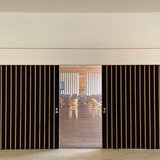Не так давно мы делились с вами проектом доступного загородного дома из фанеры, разработанным в 1960 г. Хенриком Буллом. В 1934 г. Шарлотта Перриан, к тому времени занявшая левую полосу в мировом архитектурном движении (как убежденная коммунистка), приняла участие в конкурсе, организованном журналом «L’Architecture d’Aujourd’hui», и получила в нем второй приз, предложив проект «Жилого дома у воды». За счет низкой себестоимости, отсутствия необходимости в полноценном фундаменте, простоты и быстроты возведения, а также промышленного подхода к изготовлению составляющих этого дома проект должен был дать возможность рабочему классу получить собственное загородное жилье. К сожалению, по словам дочери Перриан, «Публика восприняла проект с неприязнью вплоть до отвращения, и за его реализацию так никто и не взялся».
Как и Хенрик Булл через четверть века после публикации эскизов, Перриан разделила дом на две части: дневную и ночную, - которые сообщались при помощи террасы, защищенной от осадков складной крышей, которая также служила внутренними перегородками. Вскоре Перриан спроектирует более продвинутую версию «Дома у воды», в которой появятся прозрачные стены и сдвижные перегородки, позволяющие организовывать внутреннее пространство по желанию жильцов, а крышей будет служить отрез брезента с отверстием для сбора воды.
P.S. При жизни Перриан ни один из этих проектов для рабочего класса не был реализован. Лишь в 2013 г. ее задумка была воплощена в жизнь и представлена на выставке «Art Basel» в Майями. Парадоксально, но сделано это было компанией «Louis Vuitton»…
P.P.S. Дополнительные изображения обязательно см. в комментариях к посту.
———
What may look as the 1960 plywood house by the American Henrik Bull we recently featured is in fact a design by the French Charlotte Perriand proposed in 1934 when she had already secured a spot in the left lane of the modernist highway. An ardent communist, Perriand submitted her designs of what she believed was an affordable leisure house for the working class into a 1934 competition hosted by the L’Architecture d’Aujourd’hui magazine and won the 2nd prize. Referred to as ‘The Waterfront House’, this dwelling was designed as a simple and low-cost mass-produced summer residence that would not require a foundation and could be assembled quickly and easily of pre-fabricated parts. Much to Perriand’s regret, according to Perriand’s daughter, “No one was interested in building it. The reaction was one of dislike to horror.”
Just like Henrik Bull would a quarter of a century later, Perriand divided the house into two parts, day spaces and night spaces, with a wooden terrace in between. The terrace could be covered with a folding roof that transformed into partitions when not in use. In a little while, Perriand proposed an improved design of her Waterfront House that had full-height fenestration and moving partitions to enable the dwellers adjust the internal space as needed. The folding roof was gone and replaced with a piece of canvas with a hole in it, to collect water.
P.S. None of these designs for the working masses were built in Perriand’s lifetime. It took almost eighty years for her second design to materialize and become a centerpiece of the Art Basel in Miami in 2013. Ironically, the project was undertaken and funded by none other than Louis Vuitton…
P.P.S. For more images, see the comments down below.
(photos: yatzer.com courtesy of Louis Vuitton, Paris 16 via Wiki Commons, carolearagon.wordpress.com, ©AChP, sensesatlas.com, whitewall.art)
Как и Хенрик Булл через четверть века после публикации эскизов, Перриан разделила дом на две части: дневную и ночную, - которые сообщались при помощи террасы, защищенной от осадков складной крышей, которая также служила внутренними перегородками. Вскоре Перриан спроектирует более продвинутую версию «Дома у воды», в которой появятся прозрачные стены и сдвижные перегородки, позволяющие организовывать внутреннее пространство по желанию жильцов, а крышей будет служить отрез брезента с отверстием для сбора воды.
P.S. При жизни Перриан ни один из этих проектов для рабочего класса не был реализован. Лишь в 2013 г. ее задумка была воплощена в жизнь и представлена на выставке «Art Basel» в Майями. Парадоксально, но сделано это было компанией «Louis Vuitton»…
P.P.S. Дополнительные изображения обязательно см. в комментариях к посту.
———
What may look as the 1960 plywood house by the American Henrik Bull we recently featured is in fact a design by the French Charlotte Perriand proposed in 1934 when she had already secured a spot in the left lane of the modernist highway. An ardent communist, Perriand submitted her designs of what she believed was an affordable leisure house for the working class into a 1934 competition hosted by the L’Architecture d’Aujourd’hui magazine and won the 2nd prize. Referred to as ‘The Waterfront House’, this dwelling was designed as a simple and low-cost mass-produced summer residence that would not require a foundation and could be assembled quickly and easily of pre-fabricated parts. Much to Perriand’s regret, according to Perriand’s daughter, “No one was interested in building it. The reaction was one of dislike to horror.”
Just like Henrik Bull would a quarter of a century later, Perriand divided the house into two parts, day spaces and night spaces, with a wooden terrace in between. The terrace could be covered with a folding roof that transformed into partitions when not in use. In a little while, Perriand proposed an improved design of her Waterfront House that had full-height fenestration and moving partitions to enable the dwellers adjust the internal space as needed. The folding roof was gone and replaced with a piece of canvas with a hole in it, to collect water.
P.S. None of these designs for the working masses were built in Perriand’s lifetime. It took almost eighty years for her second design to materialize and become a centerpiece of the Art Basel in Miami in 2013. Ironically, the project was undertaken and funded by none other than Louis Vuitton…
P.P.S. For more images, see the comments down below.
(photos: yatzer.com courtesy of Louis Vuitton, Paris 16 via Wiki Commons, carolearagon.wordpress.com, ©AChP, sensesatlas.com, whitewall.art)
4👍28❤17🔥6
group-telegram.com/midcenturymodern/17222
Create:
Last Update:
Last Update:
Не так давно мы делились с вами проектом доступного загородного дома из фанеры, разработанным в 1960 г. Хенриком Буллом. В 1934 г. Шарлотта Перриан, к тому времени занявшая левую полосу в мировом архитектурном движении (как убежденная коммунистка), приняла участие в конкурсе, организованном журналом «L’Architecture d’Aujourd’hui», и получила в нем второй приз, предложив проект «Жилого дома у воды». За счет низкой себестоимости, отсутствия необходимости в полноценном фундаменте, простоты и быстроты возведения, а также промышленного подхода к изготовлению составляющих этого дома проект должен был дать возможность рабочему классу получить собственное загородное жилье. К сожалению, по словам дочери Перриан, «Публика восприняла проект с неприязнью вплоть до отвращения, и за его реализацию так никто и не взялся».
Как и Хенрик Булл через четверть века после публикации эскизов, Перриан разделила дом на две части: дневную и ночную, - которые сообщались при помощи террасы, защищенной от осадков складной крышей, которая также служила внутренними перегородками. Вскоре Перриан спроектирует более продвинутую версию «Дома у воды», в которой появятся прозрачные стены и сдвижные перегородки, позволяющие организовывать внутреннее пространство по желанию жильцов, а крышей будет служить отрез брезента с отверстием для сбора воды.
P.S. При жизни Перриан ни один из этих проектов для рабочего класса не был реализован. Лишь в 2013 г. ее задумка была воплощена в жизнь и представлена на выставке «Art Basel» в Майями. Парадоксально, но сделано это было компанией «Louis Vuitton»…
P.P.S. Дополнительные изображения обязательно см. в комментариях к посту.
———
What may look as the 1960 plywood house by the American Henrik Bull we recently featured is in fact a design by the French Charlotte Perriand proposed in 1934 when she had already secured a spot in the left lane of the modernist highway. An ardent communist, Perriand submitted her designs of what she believed was an affordable leisure house for the working class into a 1934 competition hosted by the L’Architecture d’Aujourd’hui magazine and won the 2nd prize. Referred to as ‘The Waterfront House’, this dwelling was designed as a simple and low-cost mass-produced summer residence that would not require a foundation and could be assembled quickly and easily of pre-fabricated parts. Much to Perriand’s regret, according to Perriand’s daughter, “No one was interested in building it. The reaction was one of dislike to horror.”
Just like Henrik Bull would a quarter of a century later, Perriand divided the house into two parts, day spaces and night spaces, with a wooden terrace in between. The terrace could be covered with a folding roof that transformed into partitions when not in use. In a little while, Perriand proposed an improved design of her Waterfront House that had full-height fenestration and moving partitions to enable the dwellers adjust the internal space as needed. The folding roof was gone and replaced with a piece of canvas with a hole in it, to collect water.
P.S. None of these designs for the working masses were built in Perriand’s lifetime. It took almost eighty years for her second design to materialize and become a centerpiece of the Art Basel in Miami in 2013. Ironically, the project was undertaken and funded by none other than Louis Vuitton…
P.P.S. For more images, see the comments down below.
(photos: yatzer.com courtesy of Louis Vuitton, Paris 16 via Wiki Commons, carolearagon.wordpress.com, ©AChP, sensesatlas.com, whitewall.art)
Как и Хенрик Булл через четверть века после публикации эскизов, Перриан разделила дом на две части: дневную и ночную, - которые сообщались при помощи террасы, защищенной от осадков складной крышей, которая также служила внутренними перегородками. Вскоре Перриан спроектирует более продвинутую версию «Дома у воды», в которой появятся прозрачные стены и сдвижные перегородки, позволяющие организовывать внутреннее пространство по желанию жильцов, а крышей будет служить отрез брезента с отверстием для сбора воды.
P.S. При жизни Перриан ни один из этих проектов для рабочего класса не был реализован. Лишь в 2013 г. ее задумка была воплощена в жизнь и представлена на выставке «Art Basel» в Майями. Парадоксально, но сделано это было компанией «Louis Vuitton»…
P.P.S. Дополнительные изображения обязательно см. в комментариях к посту.
———
What may look as the 1960 plywood house by the American Henrik Bull we recently featured is in fact a design by the French Charlotte Perriand proposed in 1934 when she had already secured a spot in the left lane of the modernist highway. An ardent communist, Perriand submitted her designs of what she believed was an affordable leisure house for the working class into a 1934 competition hosted by the L’Architecture d’Aujourd’hui magazine and won the 2nd prize. Referred to as ‘The Waterfront House’, this dwelling was designed as a simple and low-cost mass-produced summer residence that would not require a foundation and could be assembled quickly and easily of pre-fabricated parts. Much to Perriand’s regret, according to Perriand’s daughter, “No one was interested in building it. The reaction was one of dislike to horror.”
Just like Henrik Bull would a quarter of a century later, Perriand divided the house into two parts, day spaces and night spaces, with a wooden terrace in between. The terrace could be covered with a folding roof that transformed into partitions when not in use. In a little while, Perriand proposed an improved design of her Waterfront House that had full-height fenestration and moving partitions to enable the dwellers adjust the internal space as needed. The folding roof was gone and replaced with a piece of canvas with a hole in it, to collect water.
P.S. None of these designs for the working masses were built in Perriand’s lifetime. It took almost eighty years for her second design to materialize and become a centerpiece of the Art Basel in Miami in 2013. Ironically, the project was undertaken and funded by none other than Louis Vuitton…
P.P.S. For more images, see the comments down below.
(photos: yatzer.com courtesy of Louis Vuitton, Paris 16 via Wiki Commons, carolearagon.wordpress.com, ©AChP, sensesatlas.com, whitewall.art)
BY Mid-Century, More Than

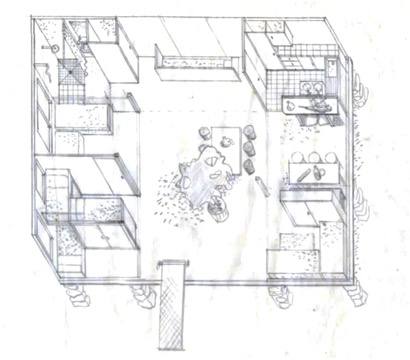
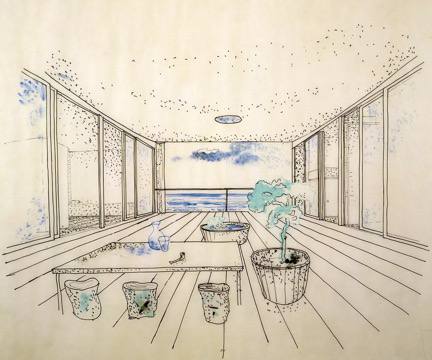
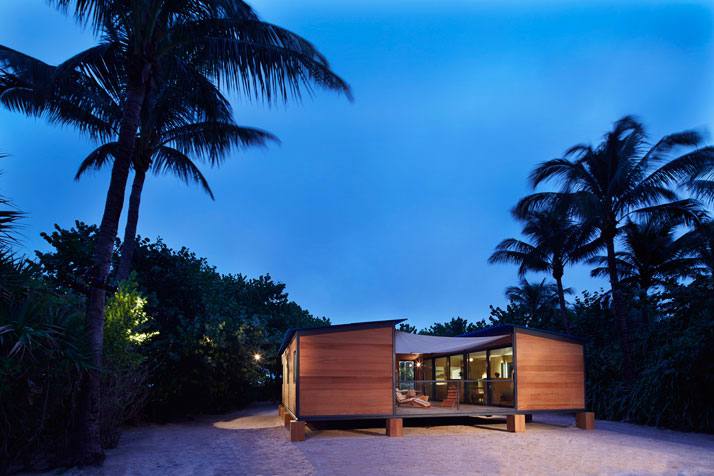
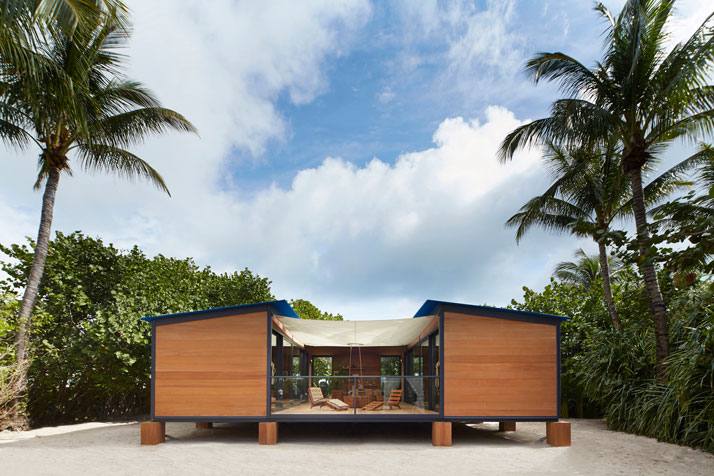


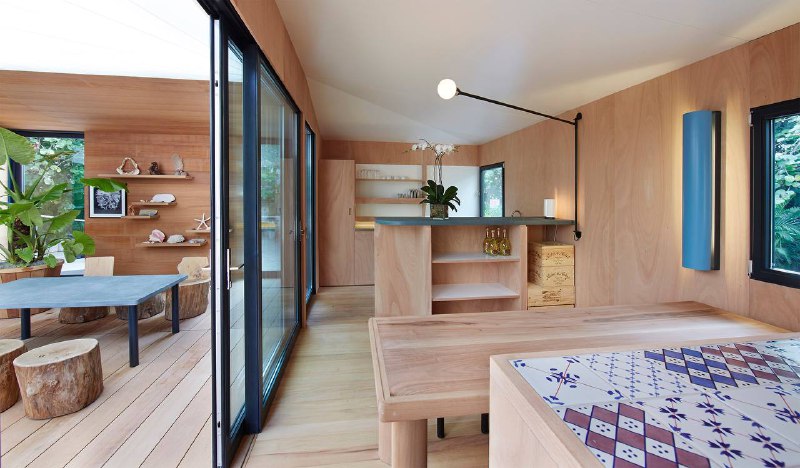
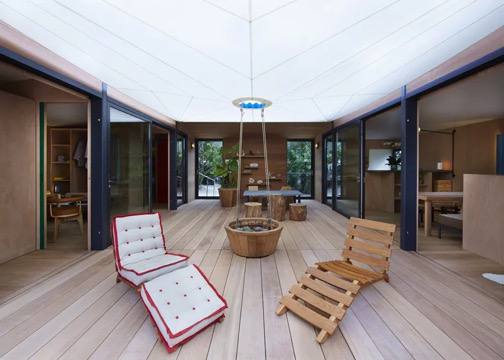
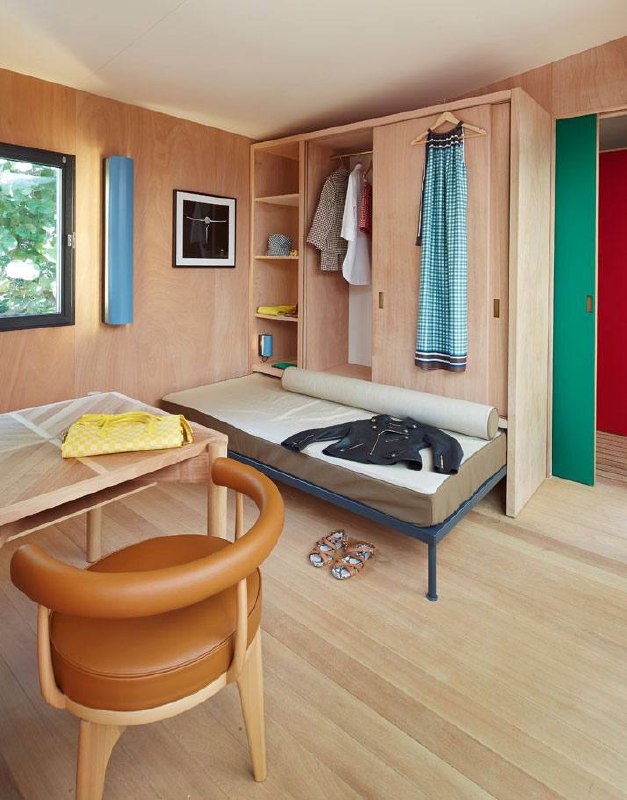
Share with your friend now:
group-telegram.com/midcenturymodern/17222
